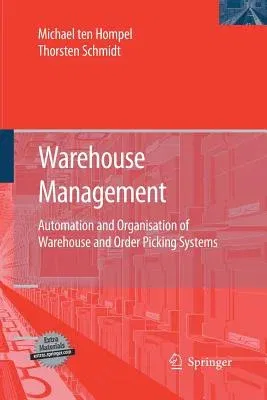Modern warehouse and distribution systems constitute highly complex
nodes within the value-added supply chain and have to meet a variety of
requirements with regard to time, costs and quality. The efficient
operation of such systems is a continuous challenge for anyone in
charge. Recent developments of advanced computer-based control
technologies have contributed to development of the necessary control
and management systems called Warehouse Management Systems (WMS).
Nevertheless, due to the high complexity, users often find it hard to
handle WMS. The design, choice and operation of a WMS requires extensive
know-how and experience because of the large variety of solutions and
system requirements. This book gives an overview of possible solutions
which help readers to make the right choice. It presents the background
and potential, but also the risks and strategies to handle them. It sets
the basis for comparisons for all those readers who are responsible for
the evaluation and specification of warehouse management systems.
Furthermore, it is meant as basic support for students and interested
beginners. This book is based on practical knowledge without neglecting
the basic context or assuming special technical knowledge. Some basic
processes and technologies that are required for a better understanding
are described in detail. System-developers will find some new ideas when
problems and limits of current developments are discussed. New
approaches with regard to the structure and design of WMS are presented.
Readers can expect a simple and well-documented explantion of WMS based
on the open-source initiative myWMS. The software can be operated on a
common PC independent of the platform and without any obligatory user
login data. Thus, the operation, function and benefits of a WMS can be
visualized.


